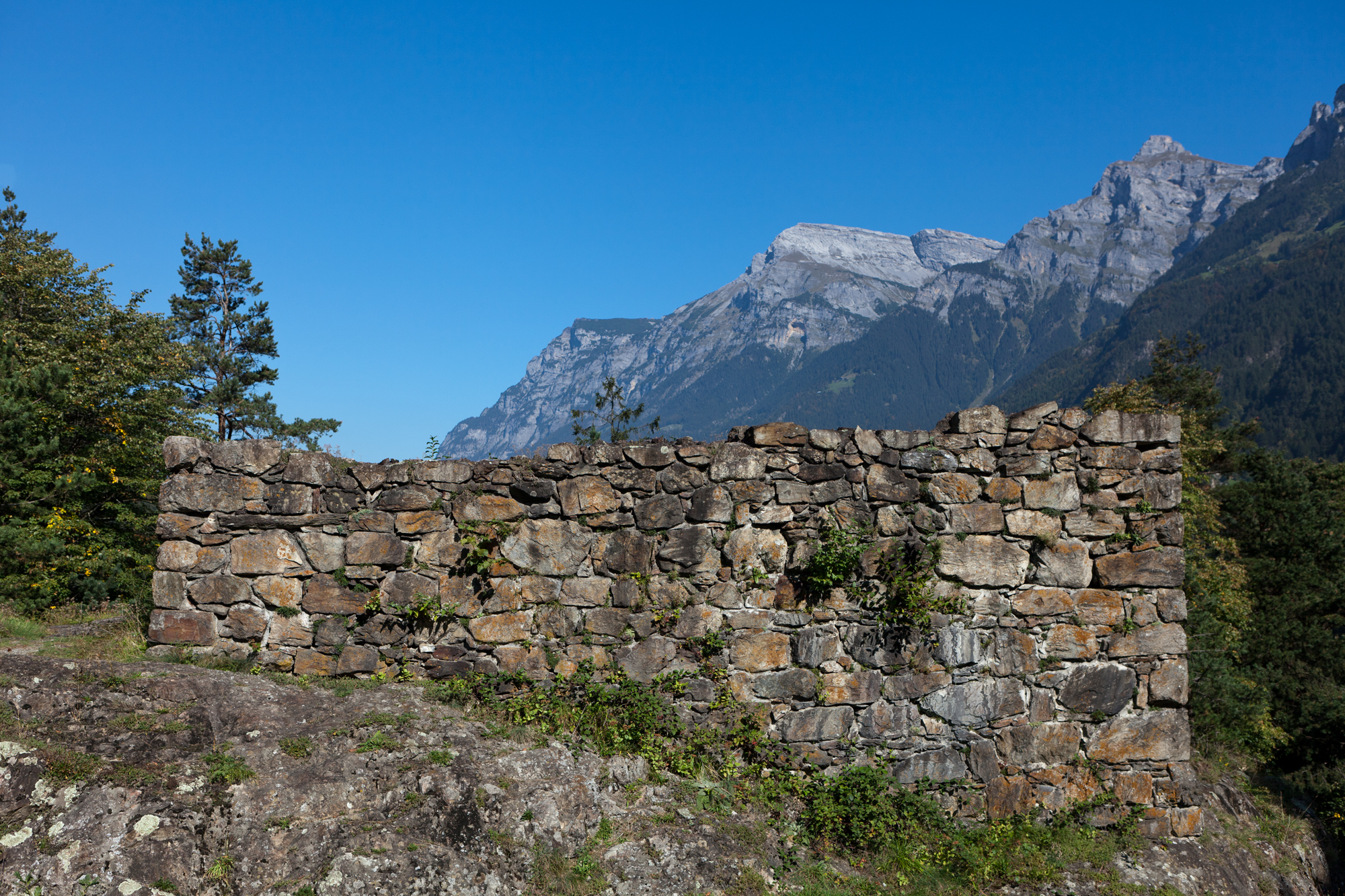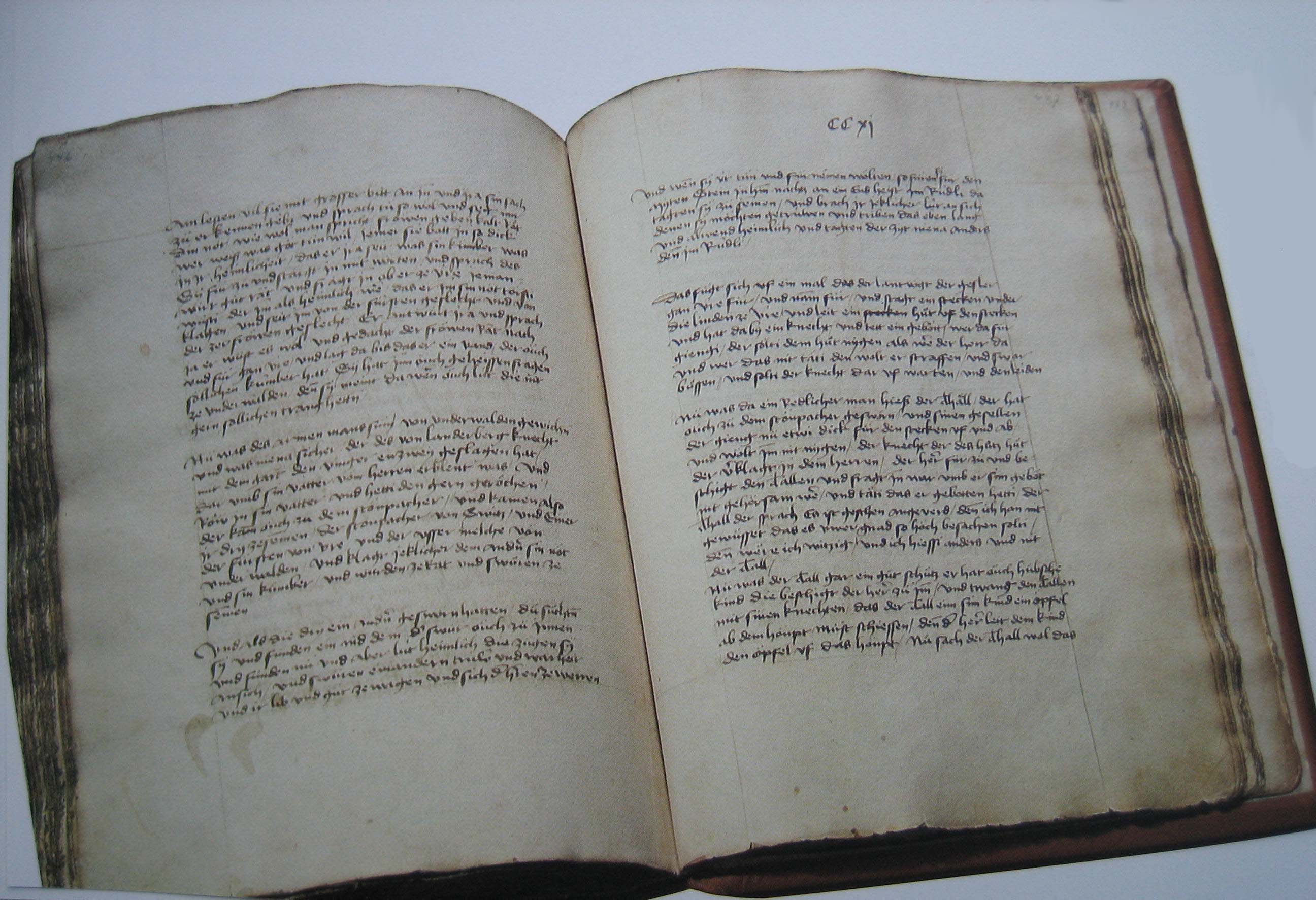|
Zwing Uri Castle
Zwing Uri is a ruined medieval castle north of Amsteg, today in the territory of the municipality of Silenen in the canton of Uri in Switzerland. It is a Swiss heritage site of national significance. The castle is notable for its role in Swiss historiography as the first fortress destroyed in the ''Burgenbruch'' at the beginning of the Swiss Confederacy. The slighting of Zwing Uri (''Twing Üren'') is mentioned in the ''White Book of Sarnen'', a Swiss chronicle of 1470. The event is placed in the year 1307 by the ''Chronicon Helveticum'' (1570). The site had been occupied since the Bronze Age. By 1150, there had been a farmstead with three buildings. By the early 13th century, the dwelling was replaced by a defensive tower. During the period of 1310 to 1320, the tower was still standing, and there are traces of a planned expansion into a full castle with a ring wall and a moat. This expansion was interrupted at about six weeks into the construction work, and the castle was ab ... [...More Info...] [...Related Items...] OR: [Wikipedia] [Google] [Baidu] |
Growth Of The Old Swiss Confederacy
The Old Swiss Confederacy began as a late medieval alliance between the communities of the valleys in the Central Alps, at the time part of the Holy Roman Empire, to facilitate the management of common interests such as free trade and to ensure the peace along the important trade routes through the mountains. The Hohenstaufen emperors had granted these valleys '' reichsfrei'' status in the early 13th century. As ''reichsfrei'' regions, the cantons (or regions) of Uri, Schwyz, and Unterwalden were under the direct authority of the emperor without any intermediate liege lords and thus were largely autonomous. With the rise of the Habsburg dynasty, the kings and dukes of Habsburg sought to extend their influence over this region and to bring it under their rule; as a consequence, a conflict ensued between the Habsburgs and these mountain communities who tried to defend their privileged status as ''reichsfrei'' regions. The three founding cantons of the '' Schweizerische Eidgenos ... [...More Info...] [...Related Items...] OR: [Wikipedia] [Google] [Baidu] |
List Of Castles And Fortresses In Switzerland
This list includes castles and fortresses in Switzerland. Entries list the name and location of the castle, fortress or ruins in each Canton in Switzerland. Aargau Appenzell Ausserrhoden Appenzell Innerrhoden Basel-Landschaft, Basel-Land Basel-Stadt Canton of Bern, Bern Canton of Fribourg, Fribourg Canton of Geneva, Geneva Canton of Glarus, Glarus Graubünden, Graubünden (Grisons) Canton of Jura, Jura Canton of Lucerne, Lucerne Canton of Neuchâtel, Neuchâtel Nidwalden Obwalden Canton of Schaffhausen, Schaffhausen Canton of Schwyz, Schwyz Canton of Solothurn, Solothurn Canton of St. Gallen, St. Gallen Ticino Thurgau Canton of Uri, Uri Vaud Valais Canton of Zug, Zug # Buonas Castle, Risch # Freudenberg Castle (Rotkreuz), Freudenberg Castle, Risch-Rotkreuz # Hünenberg Castle, Hünenberg # St. Andreas Castle, Cham, Switzerland, ... [...More Info...] [...Related Items...] OR: [Wikipedia] [Google] [Baidu] |
Schweizerischer Burgenverein
''Schweizerischer Burgenverein'' is a Swiss voluntary association dedicated to the study and preservation of medieval castles in Switzerland. Established in 1927 as ''Schweizerische Vereinigung zur Erhaltung der Burgen und Ruinen'' ("Swiss association for the preservation of castles and ruins"; the current name was adopted in 1959), its original purpose was the securing of castle ruins to prevent their further decay. Under the presidency of Hugo Schneider (1955–1972), the focus shifted on archaeological research, including the first systematic excavations of many sites earlier acquired by the association. Since 1975, the association has been a member of the Swiss Academy of Humanities and Social Sciences. During its earlier history, the association served an important function in the preservation of the historical record and archaeological research, a role which was increasingly taken over by state-financed cantonal offices for archaeology since the 1970s, causing the ''Burgenv ... [...More Info...] [...Related Items...] OR: [Wikipedia] [Google] [Baidu] |
Chronicon Helveticum
The ''Chronicon Helveticum'' (Latin for "Swiss Chronicle") is one of the oldest accounts of the early history of the Swiss Confederation. The rough draft of the ''Chronicon Helveticum'' was written by Swiss historian Aegidius Tschudi in 1550.Bergier, p. 16. Although Tschudi seems to have made the last revisions between 1569 and 1570, the monumental work did not appear in printed form until Johann Rudolf Iselin published a two-volume edition in 1734, giving it the name by which it is known today.Potter, p. 39.Führer durch das Tell-Museum in Bürglen am Klausenpass Tschudi's ''Chronicon Helveticum'' plays an important part in the historiography of Switzerland, since it contains copies of about 50 documents which have not survived in any other form.Stump, p. 225. In terms of content, Tschudi is particularly interested in representing the long-established independence of the Swiss population. Furthermore, Tschudi makes mention of the struggle between empire and pap ... [...More Info...] [...Related Items...] OR: [Wikipedia] [Google] [Baidu] |
Swiss Chronicle
Several illustrated chronicles were created in the Old Swiss Confederacy in the 15th and 16th centuries. They were luxurious illuminated manuscripts produced for the urban elite of Bern and Lucerne, and their copious detailed illustrations allow a unique insight into the politics and daily life of late medieval Switzerland on the eve of the Reformation. The most important of these chronicles are the works of the two Diebold Schillings, their luxurious execution, as well as their content reflecting the growing confidence and self-esteem of the leaders of the confederacy after their spectacular successes in the Burgundian Wars. * 1423 Konrad Justinger's chronicle (Bern) the original was lost, but a copy of the text survives in Jena. * 1470 the "Tschachtlanchronik" by Bendict Tschachtlan und Heinrich Dittlinger (Bern, now kept in Zürich) * Diebold Schilling the Elder, Bern: **1483 the "Berner Schilling", three volumes, covering the time from the foundation of Bern up to and including ... [...More Info...] [...Related Items...] OR: [Wikipedia] [Google] [Baidu] |
White Book Of Sarnen
The ''White Book of Sarnen'' (german: Weisses Buch von Sarnen) is a collection of medieval manuscripts compiled in the late 15th century by Hans Schriber, state secretary (''Landschreiber'') in the Swiss Confederation canton Obwalden. This volume, 258 pages in length, was given its name because of the white parchment in which it is bound. The White Book of Sarnen contains the earliest surviving reference to the Swiss national hero William Tell. Composition and structure The ''White Book of Sarnen'' was composed in 1474 by a country scribe called Hans Schriber.Bergier, p 63. Schriber’s book consists of two parts. The longer first part contains seventy-seven different documents that Schriber copied from original documents stored in the archives of Sarnen.Johnson, p 428. To this documentary section, Schriber added a brief report on the early history of the Old Swiss Confederacy.Bergier, p 63. This second part, 25 pages in length, makes mention of the Rütli oath ( ... [...More Info...] [...Related Items...] OR: [Wikipedia] [Google] [Baidu] |
Slighting
Slighting is the deliberate damage of high-status buildings to reduce their value as military, administrative or social structures. This destruction of property sometimes extended to the contents of buildings and the surrounding landscape. It is a phenomenon with complex motivations and was often used as a tool of control. Slighting spanned cultures and periods, with especially well-known examples from the English Civil War in the 17th century. Meaning and use Slighting is the act of deliberately damaging a high-status building, especially a castle or fortification, which could include its contents and the surrounding area. The first recorded use of the word 'slighting' to mean a form of destruction was in 1613. Castles are complex structures combining military, social, and administrative uses, and the decision to slight them took these various roles into account. The purpose of slighting was to reduce the value of the building, whether military, social, or administrative. Des ... [...More Info...] [...Related Items...] OR: [Wikipedia] [Google] [Baidu] |
Burgenbruch
The Old Swiss Confederacy began as a late medieval alliance between the communities of the valleys in the Central Alps, at the time part of the Holy Roman Empire, to facilitate the management of common interests such as free trade and to ensure the peace along the important trade routes through the mountains. The Hohenstaufen emperors had granted these valleys ''reichsfrei'' status in the early 13th century. As ''reichsfrei'' regions, the cantons (or regions) of Uri, Schwyz, and Unterwalden were under the direct authority of the emperor without any intermediate liege lords and thus were largely autonomous. With the rise of the Habsburg dynasty, the kings and dukes of Habsburg sought to extend their influence over this region and to bring it under their rule; as a consequence, a conflict ensued between the Habsburgs and these mountain communities who tried to defend their privileged status as ''reichsfrei'' regions. The three founding cantons of the '' Schweizerische Eidgenossensc ... [...More Info...] [...Related Items...] OR: [Wikipedia] [Google] [Baidu] |
Amsteg
Silenen is a municipality in the canton of Uri in Switzerland. Geography Silenen municipality comprises the villages of Silenen (divided into three parts, Dörfli, Russ, Rusli), Amsteg, and Acherli, besides numerous smaller hamlets or dispersed settlements, including Schützen, Buechholz, Öfibach, Dägerlohn, Frentschenberg, Ried (Vorderried, Hinterried), Maderanerthal valley (St. Anton = Vorderbristen, Bristen = Hinterbristen, Cholplatz, Hälteli, Steinmatte, Schattigmatt etc.), Hofstetten, Silblen, and the Golzeren plateau (Egg, Hüseren, Seewen, etc.) Silenen has an area, , of . Of this area, 12.8% is used for agricultural purposes (mostly alpine pastures), while 18.3% is forested. Of the rest of the land, 0.7% is settled (buildings or roads) and the remainder (68.1%) is non-productive (mostly mountainous). Arnisee can be reached by gondola lift from Amsteg. The Zwing Uri Castle, overlooking Amsteg has some importance in Swiss historiography as the first fortress d ... [...More Info...] [...Related Items...] OR: [Wikipedia] [Google] [Baidu] |
Swiss Historiography
The historiography of Switzerland is the study of the history of Switzerland. Early accounts of the history of the Old Swiss Confederacy are found in the numerous Swiss chronicles of the 14th to 16th centuries. As elsewhere in Europe, these late medieval and early modern were subjected to critical treatment with the emergence of modern historiography in the later 18th century. Swiss historiographical scholarship of the postmodern era (late 20th century) also followed international trends in its emphasis on topical history, such as economic history, legal history and social history and Switzerland's conduct during World War II. The first comprehensive historiography was Gottlieb Emanuel Haller's six-volume ''Bibliothek der Schweizergeschichte'' (1785–88), published still before the collapse of the Old Swiss Confederacy in the wake of the French Revolution. Later comprehensive treatments include Johannes von Müller's ''Geschichten Schweizerischer Eidgenossenschaft'' ( ... [...More Info...] [...Related Items...] OR: [Wikipedia] [Google] [Baidu] |




